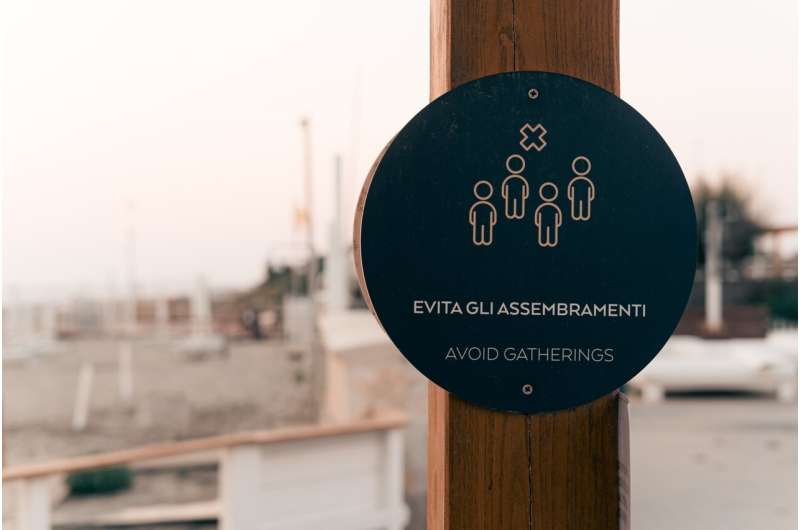Being bilingual slows brain aging and can prevent Alzheimers, researcher says


Humans are organized into around 200 nations, yet there are roughly 6,000 languages in existence. It therefore seems obvious that bilingualism is much more common than many of us might assume. This is an increasingly visible fact that appears to undermine the predominant model of “one state, one language,” a consequence of unifying previously distinct regions and cultures into larger nations.
As perspectives on this topic have begun to shift, bilingualism has been investigated for its effects on cognitive and linguistic development in recent decades. The question of whether bilingualism can protect against Alzheimer’s has been in the limelight for some time, and even today the extent to which it might be effective in combating cognitive decline is a topic of debate.
The complex relationship between aging and bilingualism
This is not a simple issue to address, given that it deals with two conditions that, in themselves, are already very complex to investigate separately, even more so when combined. When researching both bilingualism and aging there are many emotional, cognitive, linguistic and social variables to take into account. This means that the results of research in one context cannot be generalized to all populations.
Additionally, there is no single form of bilingualism. Depending on when a language is learned, we distinguish between two forms: early (or simultaneous) bilingualism which is acquired in early childhood; and successive bilingualism, when the second language is introduced later in life.
Research on early bilingualism, up to the age of around four to six, focuses on the structural and permanent impact that handling more than one language has on the developing brain. In these early years, known as the “critical period,” the brain discards, or “prunes”, massive numbers of neurons. This happens alongside the formation of a huge number of new connections and circuits. Among many other changes, phonological contrasts—the ability to distinguish different sounds—are categorized. Unpractised sounds are omitted from this process, making them very difficult to learn later on.
Studies into successive bilingualism look at different periods of acquisition. Specifically, there are three distinct stages: before age 12 to 15, from 16 to 30 and from 31 to 60.
There is also a wide range of abilities to account for: being bilingual with a basic vocabulary of 6,000 words is totally different to mastering 60,000 word-concepts in two languages with minimal errors.
Understanding and speaking a language are not the same thing
Errors can provide an especially interesting avenue of study. Normally, mistakes in producing language—speaking and writing—are more frequent and noticeable than those in reading or listening, where their presence is surprisingly minimal.
This is because the process of producing written or spoken language is more complex: it involves choosing, identifying, ordering, evaluating and completing what is being said.
Comprehension, on the other hand, is linguistically simpler, as it involves recognizing material that has already been learned. However, we cannot ignore the fact that inferring implicit meaning (that which is not said) is key to good comprehension, and this requires additional mental effort.
Research into this work of inferred meaning has found that bilingual people have enhanced cognitive abilities. Being bilingual involves handling a wider range of options in terms of both language and culture, being able to direct attention, managing a mental map, and so on. Depending on ability and experience, this can both demand and provide greater cognitive resources.
If we add the complexity of rhetoric or context—this could be social, narrative or professional—and the multiple layers of emotion that language can access, it is easy to understand why good translation is such a complex task.
Recent findings on bilingualism and cognitive decline
The recently published DELCODE study, which compares 746 participants from the aforementioned age groups, offers some excellent research into the relationship between bilingualism and aging. Its findings clearly show how, in similar usage contexts, bilingualism—be it simultaneous or successive—that is used on a daily basis is beneficial.
In particular, the study found that successive bilingualism—though not beyond the age of 60—has an impact on maintaining cognitive functions, especially in relation to learning, general memory, working memory, executive functions and language competence.
On a structural level, bilingual people have a greater volume of gray matter than monolingual people. This is true both for younger and middle aged bilinguals.
In summary, although bilingualism occurs in a range of different situations, with nuances for each individual, there is clear evidence that it causes beneficial, long lasting structural changes in the brain. Moreover, among an average population, successive bilingualism not only allows for greater communicative and cultural breadth, it also permanently improves cognitive ability. As a consequence of this, we can therefore clearly say that being bilingual protects against cognitive decline.
Provided by
The Conversation
This article is republished from The Conversation under a Creative Commons license. Read the original article.
Source: Read Full Article